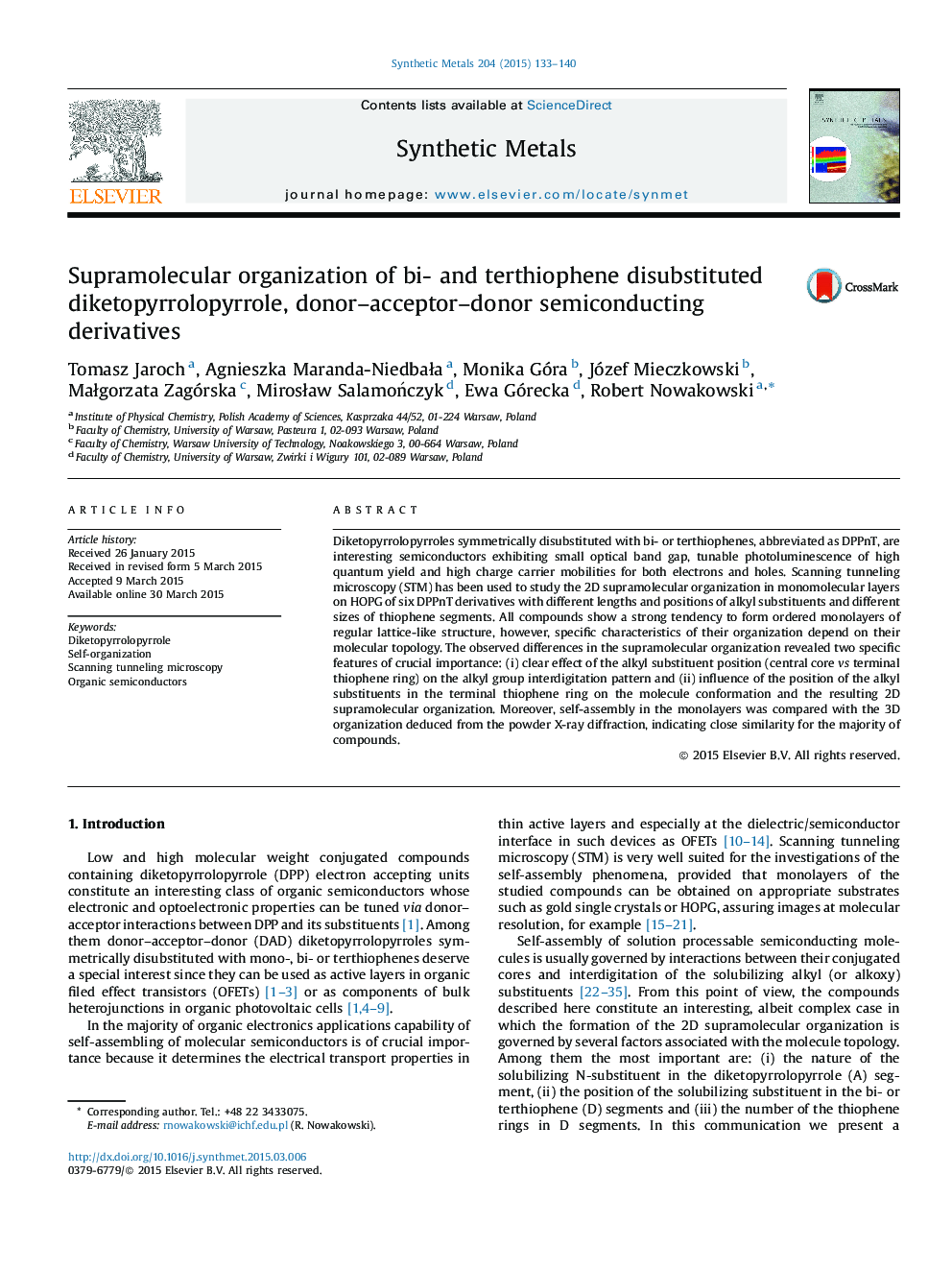| Article ID | Journal | Published Year | Pages | File Type |
|---|---|---|---|---|
| 1440607 | Synthetic Metals | 2015 | 8 Pages |
•2D supramolecular organization of diketopyrrolopyrrole derivatives is reported.•The studied semiconductors show a tendency to self-assembly on HOPG.•Changes in self-organization caused by molecular topology are analyzed.•Correlation between 2D and 3D organizations is noted for some derivatives.
Diketopyrrolopyrroles symmetrically disubstituted with bi- or terthiophenes, abbreviated as DPPnT, are interesting semiconductors exhibiting small optical band gap, tunable photoluminescence of high quantum yield and high charge carrier mobilities for both electrons and holes. Scanning tunneling microscopy (STM) has been used to study the 2D supramolecular organization in monomolecular layers on HOPG of six DPPnT derivatives with different lengths and positions of alkyl substituents and different sizes of thiophene segments. All compounds show a strong tendency to form ordered monolayers of regular lattice-like structure, however, specific characteristics of their organization depend on their molecular topology. The observed differences in the supramolecular organization revealed two specific features of crucial importance: (i) clear effect of the alkyl substituent position (central core vs terminal thiophene ring) on the alkyl group interdigitation pattern and (ii) influence of the position of the alkyl substituents in the terminal thiophene ring on the molecule conformation and the resulting 2D supramolecular organization. Moreover, self-assembly in the monolayers was compared with the 3D organization deduced from the powder X-ray diffraction, indicating close similarity for the majority of compounds.
Graphical abstractFigure optionsDownload full-size imageDownload as PowerPoint slide
